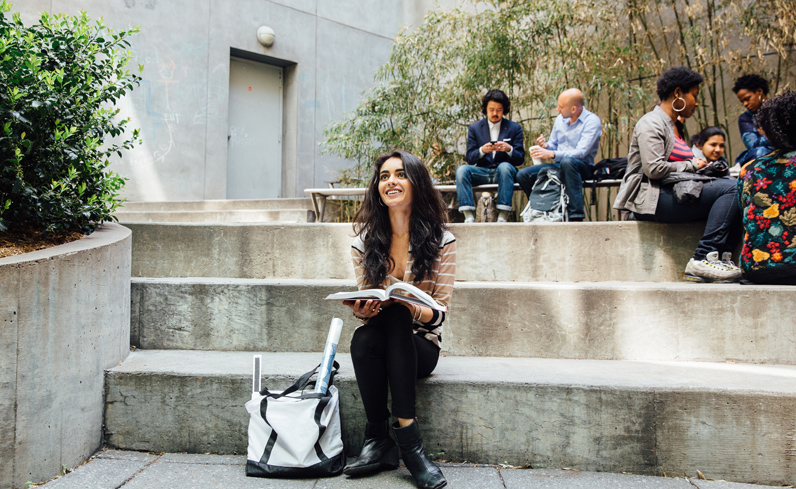
Continuing Education: The Bedrock of The New School
When The New School was founded in 1919, it was established as a school of advanced adult education that brought creative scholars and citizens together to discuss and debate the key issues of the day.
Today, a dedication to lifelong learning is still at the heart of the university—and it’s what drove Sephora Markson Hartz to enroll in her first French class this summer.
There, Hartz is pursuing her passion for Francophone language and culture. Her classmates—a mix of working professionals and graduate students, native and nonnative English speakers, 20-somethings and retirees—are there for a variety of reasons, from professional advancement to intellectual enrichment.
“The New School was founded by academics who wanted to create a different type of intellectual and creative environment—one in which anyone who wanted to take part in radical inquiry could do so,” says Hartz, who, in addition to being a student, serves as the director of Marketing for Continuing Education at The New School. “Similarly, today, our classes are intended to provide a place for people to learn, no matter where they are in their lives and no matter what motivations they might have.”
Continuing Education classes at The New School are as diverse as the students who take them. There are courses in art and design at Parsons School of Design, music at Mannes School of Music, and foreign languages, writing, media studies, and other subjects at the Schools of Public Engagement—and that’s just a slice of the university’s ever-evolving curriculum. Students can enroll in credit and noncredit courses, pursue noncredit certificates, and participate in online learning.
Long an admirer of French culture, Hartz decided that this was the summer when she would commit to learning the language. In her classroom, she has met a dozen other students with the same goal but different backgrounds—a dynamic that has created an “engaging, amazing experience.”
“When you have somebody who is in a traditional, four-year undergraduate program committing their time to theory and you balance that out with someone in a similar field spending their day on practice, you have a fuller, richer understanding of the material you’re learning,” Hartz says.
Continuing education, Hartz adds, bolsters The New School’s interdisciplinary tradition.
“It opens doors for academic engagement that you don’t find when you’re secreted away, reading about a particular issue in a book,” she says. “Bringing different values and experiences to the table leads to a more enriching experience.”
Although The New School has grown into a world-renowned urban university with seven colleges, it has preserved, and nurtured, its continuing education program. Now there are 2,000 to 3,500 students a semester taking hundreds of classes in a variety of disciplines.
And as more and more people change careers—and explore and develop their creative interests—continuing education at The New School looks to be a tradition that will last for another 100 years.
“Graduating from college at 22 doesn’t mean your desire for learning and creative expression drops off,” Hartz says. “Learning is an ongoing experience; it’s not particular to a specific life stage, but significant and meaningful for all.”
For more information about current and future continuing education courses at The New School, visit newschool.edu/ce.